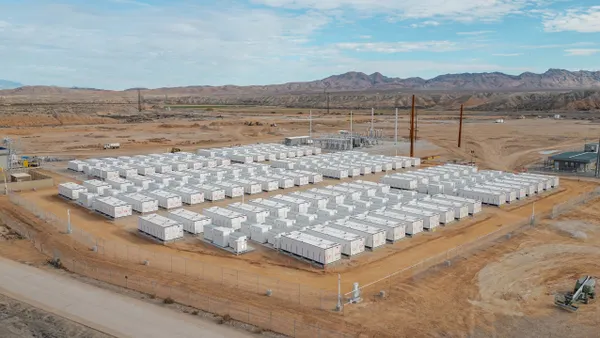Engineering energy storage systems (ESSs) for adoption at scale has two key components: open software standards and standardization. An industry-wide focus is required to examine the system design and identify the critical innovation zones where rapid performance gains are possible. It is within these innovation zones that new capabilities are developed that improve performance and make the overall product more valuable to owners. Outside the innovation zones, that focus extends to assuring consistency and stability that will drive volume, reduce costs, manage risk and improve safety.
Standardized interfaces ensure that rapid innovation zone progress can be incorporated into existing systems at a reasonable cost. This software architecture ensures that utilities can select new components without having to redesign their entire system. Batteries, power conversion systems, and control software are all great examples of innovation zones inside of an ESS. The faster the energy storage industry sorts all this out, the faster system costs will decline and adoption will accelerate. This delineation has already begun through an organization called the Modular Energy Storage Architecture Alliance (MESA) which is creating software open standards for the energy storage industry.

“Software open standards” are specifications that define how information is stored or communicated between different software programs running as part of a larger system based on interoperability. The “open” part refers to the fact that the specifications are available free of charge. The “standards” part refers to the fact that the specifications are developed and refined through a process involving a wide variety of participants who then commit to requiring them in procurements as project owners or implementing them in their products as suppliers. The existence of software open standards is crucial to the success of utility-integrated storage owners for three main reasons:
Reason 1: Software open standards lower technology and supplier risk by preserving choice.
Consider a utility who purchases their first ESS and selects a lithium-ion battery from ACME batteries. A few years later, that utility is ready to add more storage to their system, but the use case for this second system is better satisfied by a different type of battery technology. Can the utility buy the new battery technology and still use the existing software control system and/or PCS? What if the utility’s original ESS supplier does not support the new battery technology? If the utility had insisted at the time of purchase that ACME’s lithium-ion system be based on open standards, the chances would be much higher that a supplier of the new battery technology would be able to connect it with the existing control system and/or PCS. Allowing those parts of the fleet or program to remain stable keeps costs down, while taking advantage of the superior price/performance offered by the new battery technology. Prioritizing support for open standards makes it easier for the utility to change suppliers if the original supplier goes out of business or becomes uncompetitive.
Reason 2: Software open standards reduce engineering costs.
Installing an ESS and integrating it with grid operations requires that several different software programs from different suppliers “talk to” each other. Open standards take away much of the need for customized project engineering by defining it for the entire industry of suppliers. Some suppliers will say they lower this cost for owners by pre-engineering interfaces between their software and all the options out in the market, but owners should be wary of this claim. This claim requires that the supplier keep up with all the innovations in the entire industry, even ones they do not currently sell, and absorb the cost of maintaining that engineering without passing it along to their customers.

Reason 3: Open standards and standardization improve safety by reducing complexity.
The essence of engineering for scale is being thoughtful about the parts of a product where innovation is truly valuable and being relentless about standardization everywhere else. Standardization simplifies engineering of a multi-part system because designs can rely on certain components staying the same. And the more things are the same, the easier it is to train personnel on how to operate, maintain, troubleshoot and repair the overall system.
In conclusion, offering software architecture built on open standards interfaces and engineering for scale is vital for any industry aspiring to have broad impact on the world. The energy storage industry has begun this journey and must complete the task for the technology to achieve its complete interoperability potential and drive the full realization of flexible grid modernization.
For more in-depth analysis on how you can be ready to tackle the next wave in energy storage, read our whitepaper: Making Utility-Integrated Energy Storage a Used, Useful and Universal Resource










